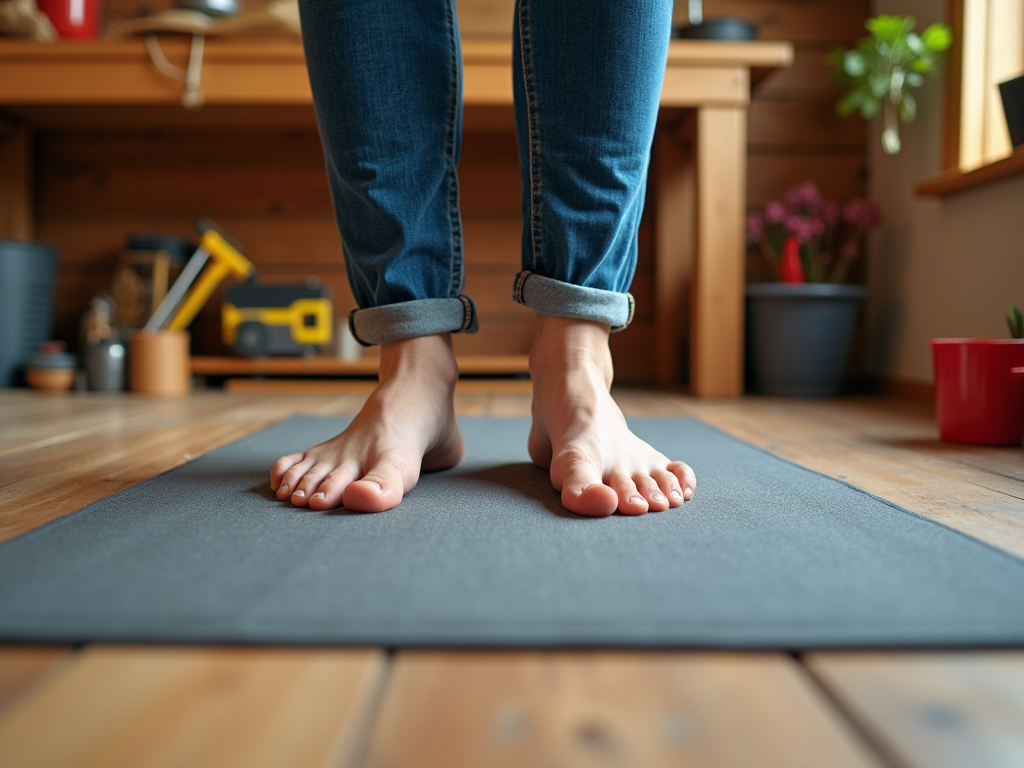If you’ve spent long hours on your feet, whether at a standing desk or in the kitchen, you know the discomfort that can follow. The best anti-fatigue mats can make a world of difference, providing comfort by reducing the physical stress associated with prolonged standing. This article explores some of the top anti-fatigue mats available for purchase online, detailing their features, benefits, and what makes them stand out in the crowded market.
Why You Need an Anti-Fatigue Mat

Anti-fatigue mats are designed to reduce fatigue caused by prolonged standing on hard surfaces. They work by providing a subtle instability that encourages slight movements of your leg and calf muscles, which in turn reduces strain on your joints, muscles, and spine. For anyone using a standing desk or standing for long periods, these mats can improve comfort and productivity.
These mats are vital in workplaces where safety and productivity are paramount. Studies have shown that they help reduce back pain and improve posture, essential for maintaining health over extended periods of standing. Additionally, these mats can contribute to fewer accidents and lower absenteeism, making them a valuable addition to any workspace.
Key Features to Consider

When choosing an anti-fatigue mat, there are critical features to consider to ensure you get a product that suits your needs. The material, thickness, and size play an essential role in comfort and durability. Some mats are made with foam, gel, or rubber, each offering varying levels of cushioning and support. A thicker mat generally provides better comfort, but the density of the material should also be considered.
Here are some essential features to keep in mind when selecting an anti-fatigue mat:
- Material: Foam, gel, and rubber variations offer different comfort levels and resilience.
- Thickness: A thicker mat can offer more support and cushioning.
- Size and Shape: Consider the area where you’ll be using the mat to ensure it fits properly.
- Non-Slip Base: Safety is crucial, so ensure the mat won’t slide around on hard surfaces.
- Durability: Look for mats that are easy to clean and can withstand heavy use.
Top Picks for Anti-Fatigue Mats
1. Imprint CumulusPRO
The Imprint CumulusPRO is often highly rated for its superior comfort and durability. It features a cushion-core technology that allows for exceptional comfort, making it perfect for use in high-use kitchens and offices. The mat’s high-density core ensures it won’t lose shape, even with heavy foot traffic, while also providing a non-slip surface for safety.
This mat is also eco-friendly, fabricated without toxic elements like PVC or lead, making it a safe choice for homes and offices. Available in various sizes and colors, it can easily blend into any decor while providing the necessary utility. It’s clear why this model is a top pick among anti-fatigue mats.
2. Kangaroo Original Standing Mat
The Kangaroo Original Standing Mat is known for its perfectly cushioned surface that reduces fatigue significantly. Its ergonomic design includes a non-toxic, phthalate-free construction, ensuring safety without compromising on style or function. Its high-grade foam provides lasting support, and its smooth surface is easy to clean, making maintenance a breeze.
Users love the beveled edges that prevent tripping, and its non-slip underside that stays firm on any surface. Available in various sizes and styles, this mat can serve a variety of spaces, from kitchens to professional workstations. Its blend of safety, convenience, and comfort make it a favorite for many.
How to Care for Your Anti-Fatigue Mat
Proper care and maintenance of your anti-fatigue mat can extend its lifespan and functionality. Regular cleaning is vital as it keeps the mat free from dust and debris, which could compromise its non-slip feature. Mats made from foam or rubber can usually be cleaned with mild soap and water, followed by air-drying.
It’s also important to regularly inspect your mat for signs of wear and tear, such as edges curling or the surface hardening. Addressing these issues promptly by replacing the mat if necessary can prevent potential safety hazards. Ensuring your shoes and the area around the mat are clean will also help maintain its effectiveness.
Conclusion
Investing in the best anti-fatigue mat is a step toward enhancing your health and productivity. Whether you are at your home kitchen or a corporate desk, the right mat serves as an essential tool to reduce fatigue and improve comfort. With numerous options available online, from the Imprint CumulusPRO to the Kangaroo Original, there is a mat for every need and style.
Considering factors like material, thickness, and durability will help you make an informed decision. Each of the mats reviewed offers outstanding benefits to support prolonged standing, ensuring you remain comfortable and productive throughout the day.
Frequently Asked Questions
1. What is an anti-fatigue mat?
An anti-fatigue mat is designed to reduce fatigue from prolonged standing by offering cushioning and support that encourage subtle movements, improving blood flow and reducing strain on the body.
2. Can using an anti-fatigue mat improve productivity?
Yes, using an anti-fatigue mat can enhance productivity by reducing discomfort associated with long hours of standing, allowing users to focus better and work longer comfortably.
3. Are anti-fatigue mats easy to clean?
Most anti-fatigue mats are easy to clean using mild soap and water. It’s important to let them air-dry completely to maintain their quality and non-slip features.
4. Do anti-fatigue mats work on all types of flooring?
While most anti-fatigue mats have non-slip bases that work on various surfaces, it’s crucial to check the product specifications to ensure compatibility with your flooring type.
5. How often should I replace my anti-fatigue mat?
The lifespan of an anti-fatigue mat varies based on use and material quality. Regular inspection for wear and tear will help determine when a replacement is necessary, typically every 1-3 years depending on the traffic and environment.
